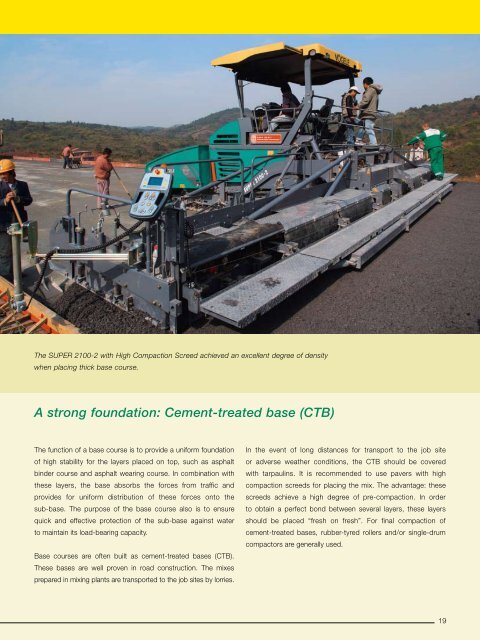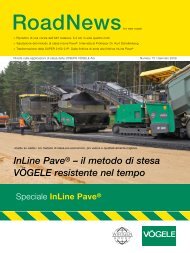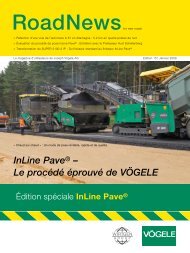Download e-Magazine (PDF File)
Download e-Magazine (PDF File)
Download e-Magazine (PDF File)
You also want an ePaper? Increase the reach of your titles
YUMPU automatically turns print PDFs into web optimized ePapers that Google loves.
The SUPER 2100-2 with High Compaction Screed achieved an excellent degree of density<br />
when placing thick base course.<br />
A strong foundation: Cement-treated base (CTB)<br />
The function of a base course is to provide a uniform foundation<br />
of high stability for the layers placed on top, such as asphalt<br />
binder course and asphalt wearing course. In combination with<br />
these layers, the base absorbs the forces from traffic and<br />
provides for uniform distribution of these forces onto the<br />
sub-base. The purpose of the base course also is to ensure<br />
quick and effective protection of the sub-base against water<br />
to maintain its load-bearing capacity.<br />
Base courses are often built as cement-treated bases (CTB).<br />
These bases are well proven in road construction. The mixes<br />
prepared in mixing plants are transported to the job sites by lorries.<br />
In the event of long distances for transport to the job site<br />
or adverse weather conditions, the CTB should be covered<br />
with tarpaulins. It is recommended to use pavers with high<br />
compaction screeds for placing the mix. The advantage: these<br />
screeds achieve a high degree of pre-compaction. In order<br />
to obtain a perfect bond between several layers, these layers<br />
should be placed “fresh on fresh”. For final compaction of<br />
cement-treated bases, rubber-tyred rollers and/or single-drum<br />
compactors are generally used.<br />
19








